How to Reduce Carbon Footprint of Your Travels
/0 Comments/in Mother Earth, We Recommend /by Alper Ertubey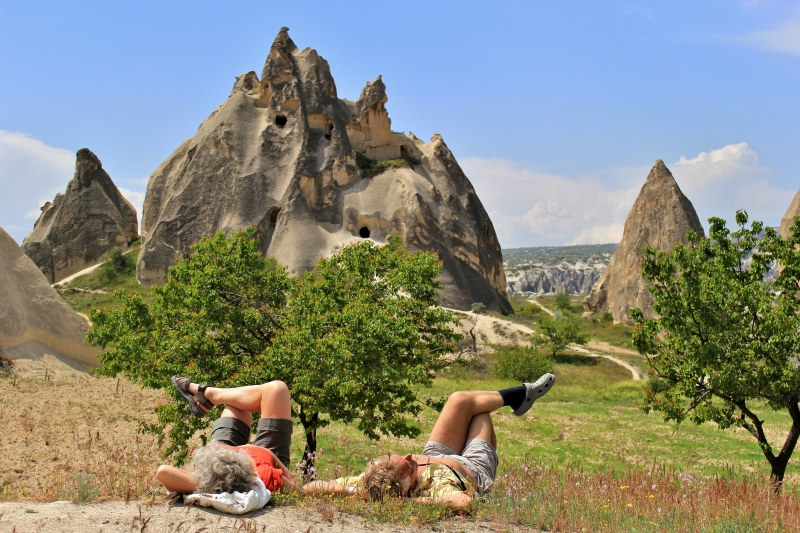
We are currently battling a terrible global crisis. Over the past months, the COVID-19 pandemic has taken millions of lives, shut down tourism, and threatened the livelihoods of countless people. Though COVID-19 is front of mind right now, there is another crisis that will bring even graver consequences for humanity and imperil the destinations we love. That threat is climate change, which is forcing us to reduce carbon footprint.
In recent years, tourism came under heightened scrutiny for its contribution to the climate emergency. We began hearing terms like “flight shaming” as people become more aware of their impact. Tourism does play a role in the climate crisis, there’s no denying that. In fact, a 2018 study found that tourism accounts for 8% of the world’s carbon emissions. On The Sustainable Travel webpage, we provide a breakdown of the different activities that contribute to tourism’s carbon footprint.
But this doesn’t mean you should swear off traveling altogether. The current pause in tourism allows us to rethink our habits and learn how to travel in a responsible way. There are many ways that you can lessen your travel emissions and drive the industry towards a more sustainable future. Read our tips below to discover how you can reduce the carbon footprint of your next trip.
1. Avoid flying to nearby destinations
Air travel and other forms of transportation comprise the largest portion of tourism’s carbon footprint. Did you know that taking just one flight can produce more emissions than some people produce in an entire year? Take for instance a round-trip flight from Chicago to London which produces roughly 2.2 metric tons of CO2 per passenger. That’s double the number of emissions that the average person in Guatemala generates over an entire year.
While some believe the answer is to never fly, we realize that tourism is a key driver of economic growth in many destinations that can only be reached by plane. Eliminating air travel would be devastating for all of the people that depend on tourism for their livelihoods. Thus, we don’t advocate giving up flying altogether; however, it is best to contain air travel to only those destinations that are farther away.
When vacationing closer-to-home, there are many opportunities to replace air travel with more sustainable modes of transportation. As a general rule, charter buses and trains tend to be the most climate-friendly options. What about driving? One of the big factors to consider here is the number of passengers that will be in your vehicle. If you’re traveling solo, then driving a car may actually have a higher carbon footprint than flying on a plane. But if you’re traveling with the whole family then a good old fashioned road trip is likely the better choice.
The graph below compares the number of emissions produced by an individual passenger on a 200 mile trip based on their mode of transportation. For reference, 200 miles is approximately the distance of a flight between New York City and Washington D.C.
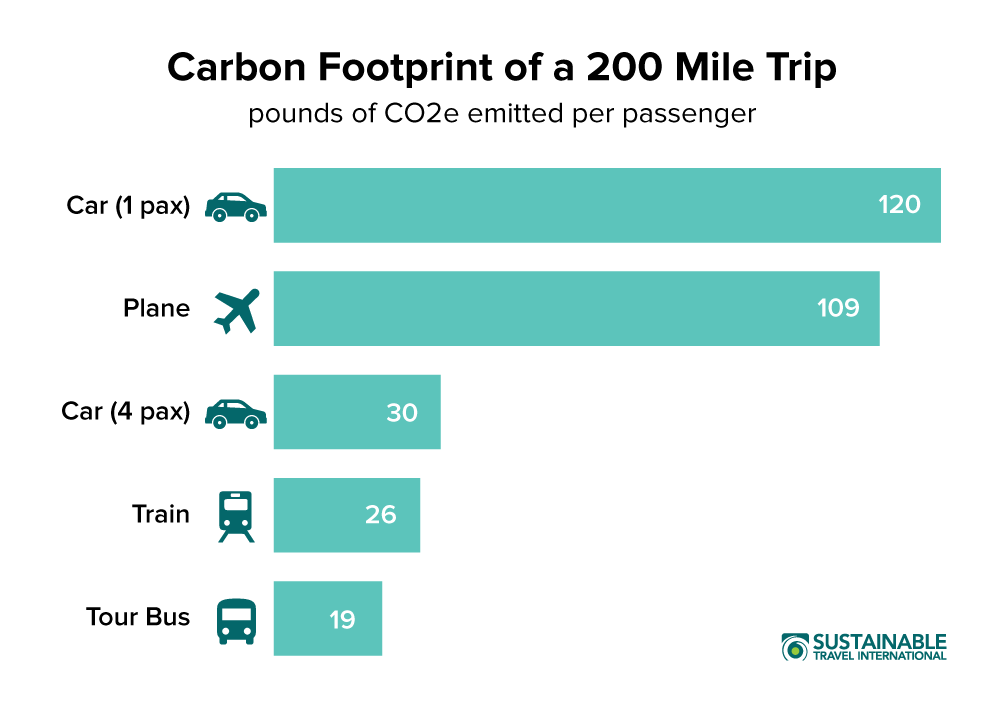
Values based on DEFRA emissions factors
2. Book non-stop flights
If you do travel by plane, one way you can reduce carbon footprint is by booking a non-stop flight. Because non-stops take the most direct route to the destination, they require less fuel than itineraries with multiple legs. Consider a trip from Los Angeles to the Philippines. A non-stop flight directly between the two destinations travels 7,292 miles. However, if you add in a layover in Taiwan, the journey comes in at about 7,600 miles. Those 300 extra miles tack on about 163 pounds of CO2 to each passenger’s carbon footprint.
The shorter distance isn’t the only reason to book a non-stop flight. One lesser-known fact is that planes release the most carbon during take-off and landing. It’s better to book one long flight rather than multiple shorter flights so that you only have to take off and land one time. If you can’t find a non-stop, choose the itinerary that takes the most direct route and makes the least stops.
Hike'n Sail's note: Turkish Airlines provides the best global connections.

3. Fly economy
One good thing about flying in economy class? Doing so will lower your carbon footprint. This is because an air passenger’s emissions are determined by the amount of space they take up on the plane. On average, business class seats are two times larger than those in economy. This means that a business class passenger’s carbon footprint is typically double that of a traveler in economy. First-class seats occupy even more space and have an even larger carbon footprint. Book economy to save money on your ticket while also saving the planet!
4. Pack light
The heavier your luggage, the more fuel it takes to transport it by plane, bus, car, or train. Pack your bags as light as possible to reduce fuel use and thus, the amount of carbon emitted.
Start off by choosing a lightweight suitcase and carefully consider what you put in it. Bring clothing that you can wear multiple times and that is easy to wash while on the go. Leave larger items like camping gear at home and rent it locally instead. Remove any unnecessary packaging from items and put your toiletries into small, reusable containers.
When we crunch the numbers, we find that lightening your luggage by 15 pounds would decrease your emissions by about 80 pounds on a ten-hour flight. Imagine if there were 200 passengers on your flight and they all packed light – It would eliminate 16,000 pounds of CO2!
5. Slow it down
These days it’s easy to find ourselves constantly busy, rushing around, and operating at a fast pace. Travel should be an opportunity to get away from the hustle and bustle, yet all too often we plan vacations that are even more hectic than our day-to-day lives.
Slow things down by spending more time in one destination rather than trying to cram in visits to every “must-see” place. Consider taking one longer vacation each year instead of multiple shorter trips. Doing so will allow you to more fully experience the destination and build deeper connections. Slowing things down also decreases the amount of emissions that you would be generating by traveling between numerous places. Trust us, you will thank yourself when you return home feeling refreshed, rather than like you need another vacation!
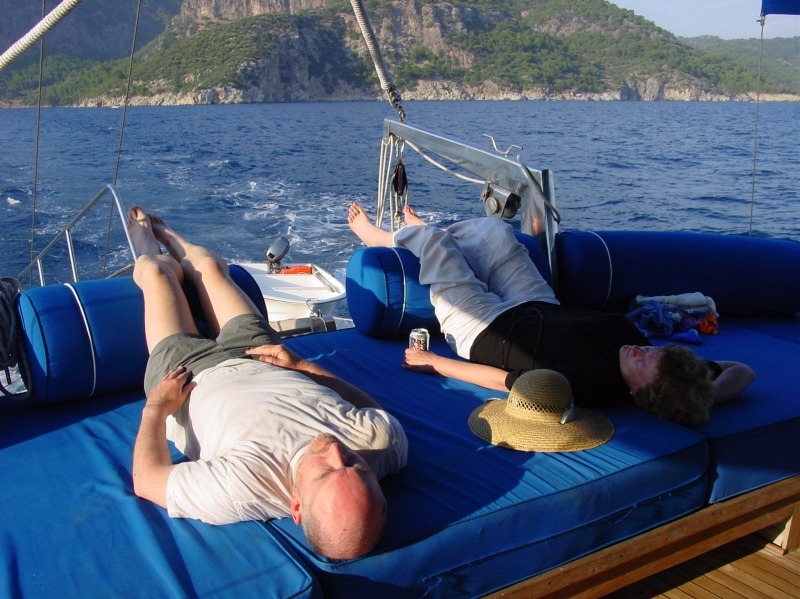
6. Choose efficient transportation to explore your destination
Getting to your destination is just one part of the equation and there is room here to reduce carbon footprint. Unless you brought your car, you will need a way to get around the destination once you’ve arrived.
Instead of hiring a driver or renting a car, be adventurous, and opt for public transportation (as long as health experts deem it safe to do so!). Ride the subway. Hop on a bus. Take a streetcar. Just note that the efficiency of public transport modes can vary from one destination to the next. While many cities’ bus and rail systems are powered by cleaner fuels or alternative technologies, others still run on diesel or natural gas. In some places, visitors can even hop in electric tuk-tuks to weave through traffic jams. Research the different options in the destination you are visiting to make an informed decision.
If you are up for a more active experience, spend the day exploring by bicycle or on foot. If you do rent a car, opt for a hybrid, electric, or smaller car instead of an SUV, pickup truck, or van.

7. Turn down the AC and heat, switch off electronics
High utility bills motivate many people to conserve energy in their homes. But on vacation it’s the hotels that shoulder the cost. This can lead people to be less conscientious about their energy use during their travels than when they are at home. But regardless of who’s footing the bill, our planet will pay the price.
The concept is simple. The more energy we use, the more carbon emissions we generate. Whether at home or away, we should do what we can to minimize our energy consumption. This includes turning off the lights, TV, and any other unnecessary electronics when not in use. If you don’t plan to use the mini fridge in your hotel room, unplug it or turn it off for your entire stay.
When visiting a hot climate, it can be tempting to leave the air conditioner blasting while you’re out exploring the destination. But while you’re cooling down your room, the resulting emissions will be heating up the planet. When leaving your hotel, turn off the AC or set the thermostat a few degrees higher. You can also close the curtains to prevent the sun from beaming in all day. In colder destinations, turn down the heat when your room is unoccupied and close the curtains at night to add some extra insulation. Don’t forget to also adjust your thermostat at home before leaving on vacation!
8. Use the “Do Not Disturb” sign
Along with shutting off all of your electronics, there’s another simple action that you can take to reduce the carbon footprint of your hotel stay: put up the “Do Not Disturb” sign. Hotels want to deliver the best customer service to their guests and make you feel like royalty. But do you really need your room vacuumed every day? Or your towels washed after every use?
Reduce the amount of energy and resources that are used for housekeeping activities by hanging up the “Do Not Disturb Sign” outside your door.
9. Eat the local cuisine
From kinds of seafood to curries to kinds of pasta to vegetables, every destination offers unique delicacies and tasty bites. When eating abroad, take advantage of the opportunity to try all of the local dishes that you can’t get at home. Learn about the traditional cuisine, shop at local food markets, and dine at restaurants that source their ingredients from local farmers and fishers. Do your best to avoid imported foods that must be transported from far away and require more packaging and refrigeration to preserve them along the way.
By eating local foods instead of imported ones, you’ll reduce the carbon footprint of your meal while also supporting the local economy. Plus, you’ll get to experience the local food culture and enjoy some of the freshest cuisine out there!

10. Reduce food waste
With all the delicious and exotic food dishes to try, it’s hard not to overindulge while on vacation. But did you know that food production is responsible for roughly one-quarter of the world’s emissions? As forests are cleared to graze cows and grow crops, the carbon they store is released into the air. Food also produces carbon when it’s processed, packaged, transported, and refrigerated; and when we throw our uneaten food away, it creates harmful methane emissions as it rots in a landfill.
When sampling the local cuisine, make sure your eyes are not bigger than your stomach. If you don’t think you’ll be able to finish a dish, ask for a smaller portion, or share it with a friend. You can also bring a reusable container and take your leftovers back to your hotel. There are lots of collapsible, travel-friendly containers out there!
Beware of all-you-can-eat buffets which are a major food waste culprit. The abundance of choices (at no additional cost!) makes it all too easy to pile your plate high with more food than you can eat. Not to mention all of the food that must be thrown away after it’s been sitting out in the buffet trays. Plus, buffets are a great way to spread viruses and bacteria, so do yourself a favor and steer clear of them altogether.
11. Buy meaningful souvenirs that you will actually use
How many times have you returned home from vacation wondering why you purchased a particular souvenir? Many visitors fall into the trap of buying tacky items that seem fun at the time or clothing that they wouldn’t ever wear at home. But everything that is produced has its own carbon footprint, be it a t-shirt, mug, keychain, or purse.
Before purchasing an item, consider whether it’s something that you will actually use at home. Are you really going to wear that sombrero? Is that snow globe going to collect dust in the back of a drawer? Choose practical items that you’ll actually use. Buy meaningful souvenirs crafted by local artisans rather than mass-produced items imported from abroad. Invest in high-quality products instead of poorly made items that you’ll have to trash after one use.

12. Stay at eco-friendly hotels
There’s only so much that you can personally do to reduce your carbon footprint. But as a traveler, you have the power to drive hotels and other businesses to take climate action and change their practices. When booking a hotel, opt for one that is dedicated to reducing its carbon footprint. There are many things that hotels can do to cut their emissions such as installing energy-efficient fixtures and appliances, utilizing renewable energy, automating temperature control, sourcing products locally, or buying carbon offsets.
To identify if a hotel is taking climate action, start by visiting their website. Most hotels that are doing something to combat their carbon footprint will be talking about it on their website. To identify those hotels who are actually walking the talk, look for specific practices they have in place or data on the reductions they’ve achieved. If you can’t find information online, ask the hotel what they’re doing. During your stay, you might notice additional practices or processes that they could put into place. If so, be sure to share your ideas on the guest feedback card. Simply asking questions and providing feedback is a great way to show hotels that their customers are factoring sustainability into their purchase decisions.
Or why not try a cultural experience for a few of your vacation nights? Staying in a homestay gives you the opportunity to live like a local and find some of the best spots to explore that tourists might not usually hear about. And a bonus to this? Homestays with more basic amenities tend to be less carbon-intensive than luxury resorts with pools, spas, golf courses, and fitness centers.

13. Offset your carbon footprint
While the steps listed above will help you reduce your carbon footprint, no matter how sustainable your habits are certain emissions will always be unavoidable. Purchasing carbon offsets allows you to compensate for the emissions that you can’t reduce.
When you buy carbon offsets, you are contributing to projects that reduce emissions in another part of the world. For instance, one project might absorb existing carbon emissions by restoring an area of degraded rainforest, while another might generate clean energy by constructing wind turbines. In addition to reducing carbon and mitigating the climate crisis, these projects support community development and protect important habitats.
There are a few considerations to keep in mind when choosing a carbon offset provider. To help you navigate all of the options that are out there, we’ve put together a list of things to look for when selecting a carbon offset provider.
Ready to offset now? You can use our online calculator to calculate and offset the carbon footprint of your flights.
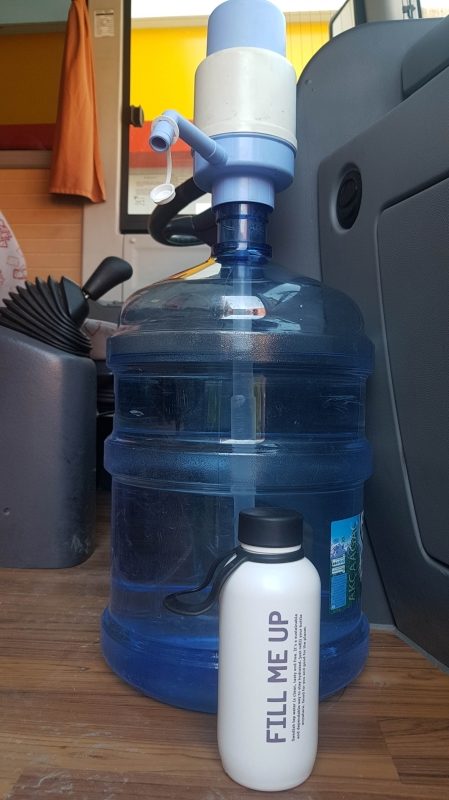
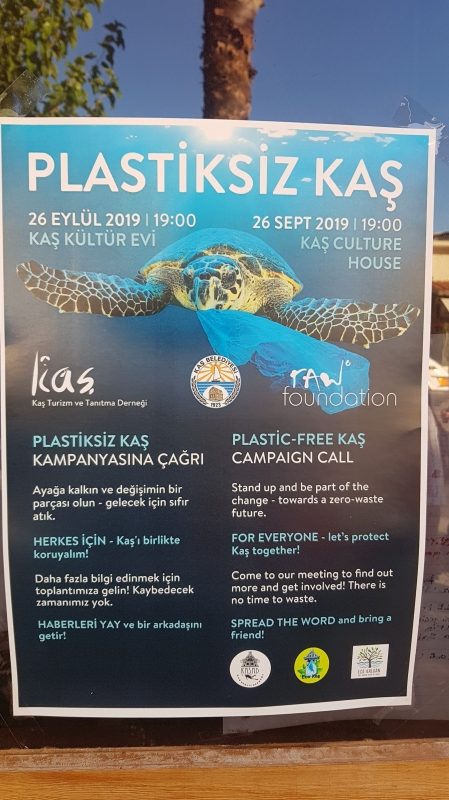
14. Support sustainable tourism projects and initiatives
You can also support nonprofit organizations that are advocating for climate action and guiding the tourism industry towards a carbon-neutral future.
At Sustainable Travel International, combatting tourism’s contribution to climate change is one of our top priorities. In addition to educating travelers, we work directly with destination leaders, local communities, and tourism businesses to reduce their reliance on fossil fuels and drive systemic change. For instance, we are currently implementing a project that aims to make Palau the world’s first carbon-neutral tourism destination by localizing food production and channeling tourism dollars into conservation projects. We hope to scale this approach to additional destinations to mitigate tourism’s carbon footprint.
Learn more about our work to address climate change here.
*** This article is taken from Sustainable Travel Organization. Images are from Hike'n Sail Travel's trips.
Follow, be aware, and create awareness.
















Leave a Reply
Want to join the discussion?Feel free to contribute!